Unless you’re an engineer, you’ve probably never stepped inside the E-Quad. Usually, you’re lucky if you get to the E-Quad at least once before you graduate!
But never fear — you can visit the E-Quad digitally, too. Today I’d like to bring the E-Quad to you and take you on a tour around the lab I work in, the Princeton University Laser Sensing (PULSe) Lab.
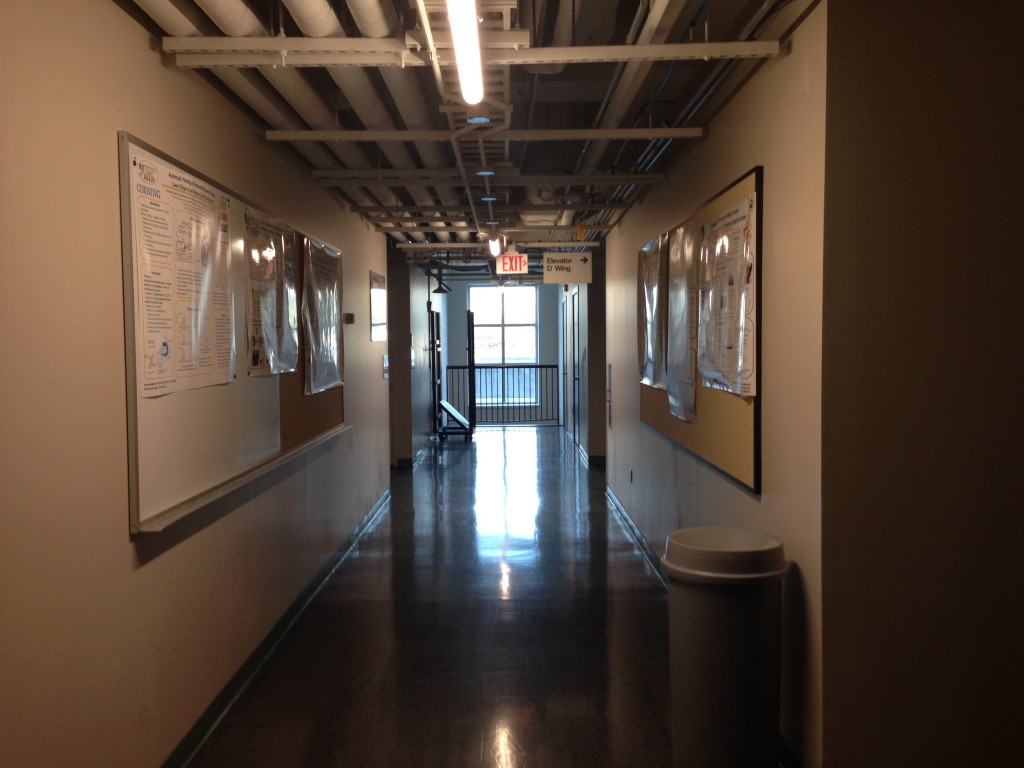
It all starts with a walk down a hallway on the third floor of the J-Wing of the E-Quad. It can get especially dark at night, since the lights here are energy-saving and only turn on when someone is walking by.
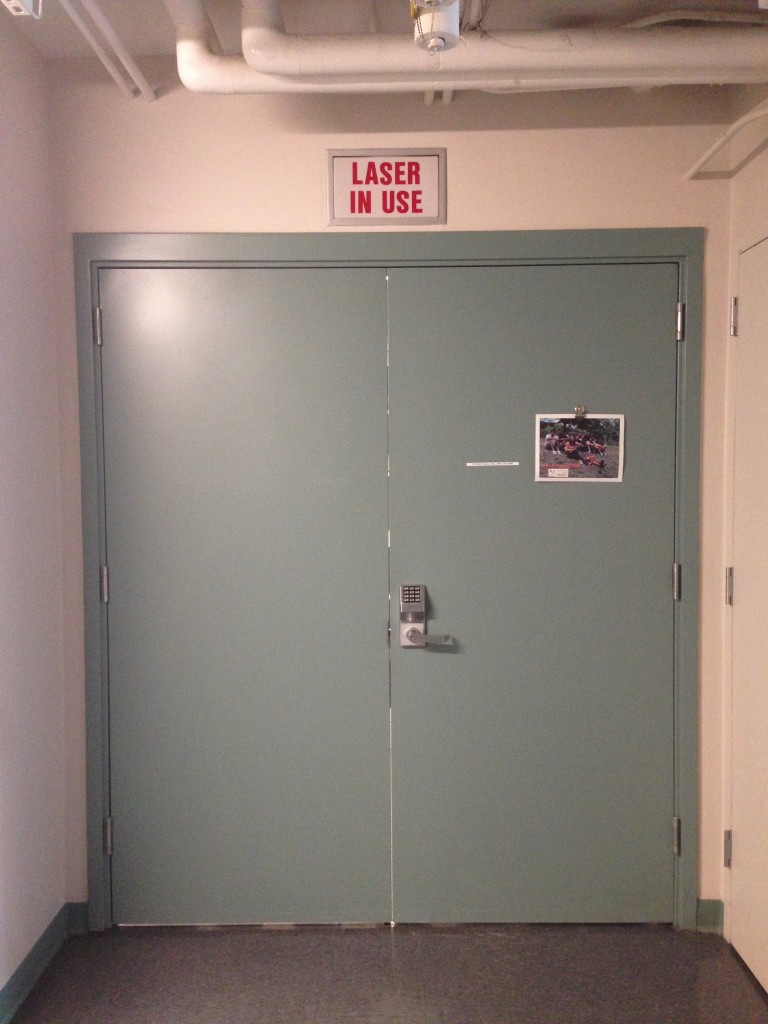
At the end of the hallway, you come upon room J321. This is the lab! Before you enter, be sure that the “LASER IN USE” sign is not lit. That means it’s safe to enter.
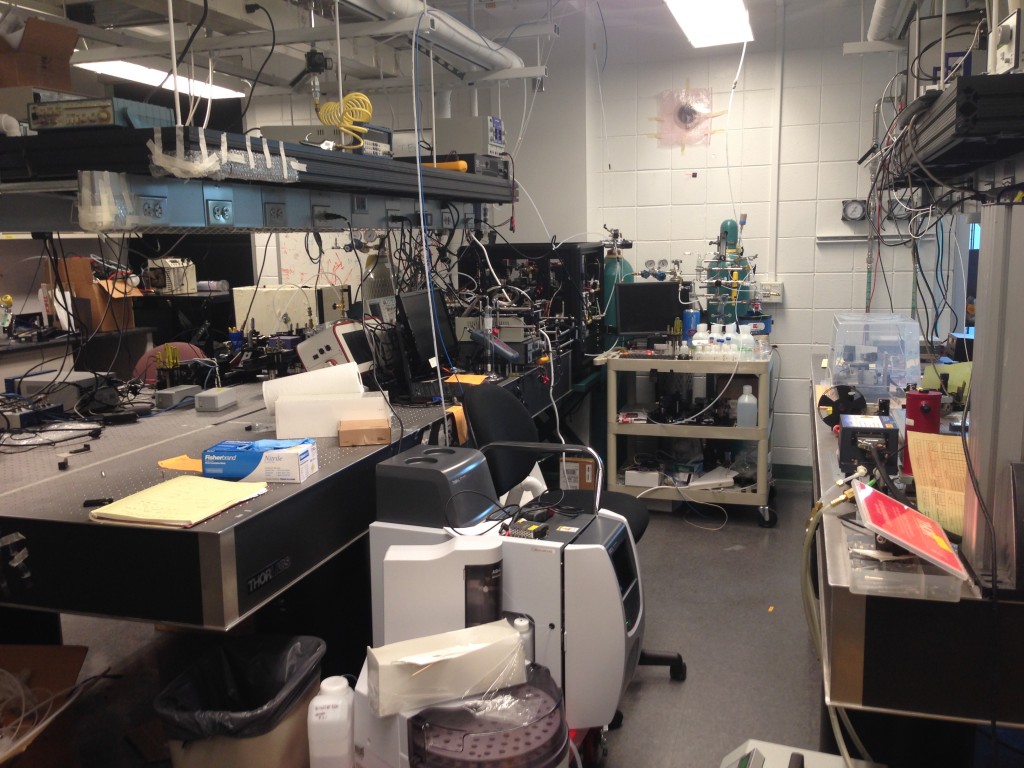
Our lab has two main rooms — I currently work in the left room, pictured here. The equipment on the beige cart and the black machine to the left of it are the systems I currently work with. I’m working on improving a machine to sensitively and quickly analyze the nitrogen content in ocean water in order to help geologists better understand the nitrogen cycle. The lab space is shared by a lot of researchers, so we have to be careful about the space we use and to not disturb other people’s experiments.
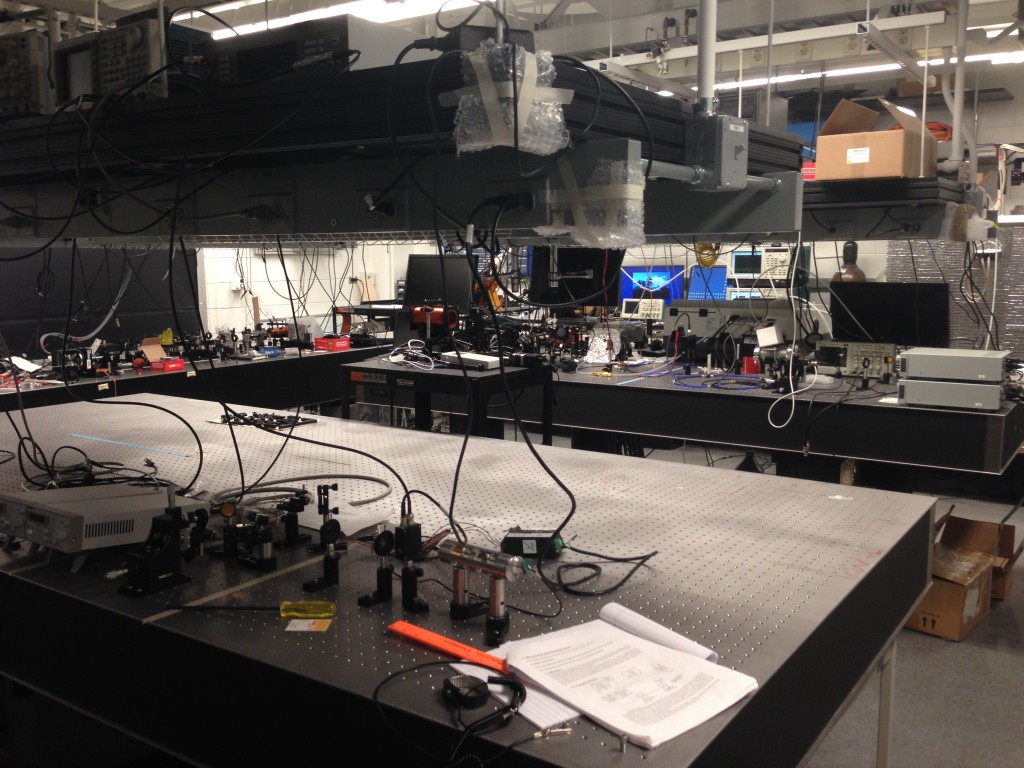
This is the lab space in the room on the right. These silver tables are called optical tables — there are a lot of holes on the table where you can screw optical equipment such as lenses, pinholes, mirrors, and lasers. This ensures that you can run consistent experiments without anything moving. These tables even have the ability to “float” if gas is pumped beneath it, adding another layer of insulation from mechanical disturbances.
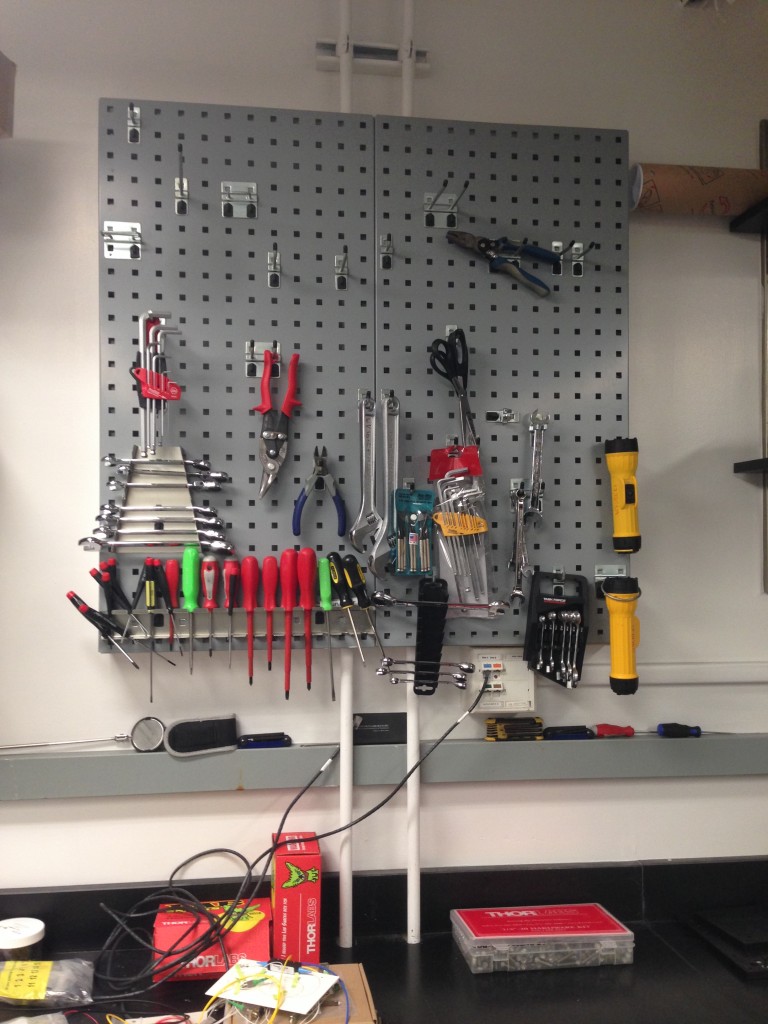
In the right room, there’s a wall with a ton of useful tools available for everyone in the lab to use — screwdrivers, wrenches, scissors, even flashlights! These tools are actually all used fairly often, from screwing components onto the optical table and putting together tubing for gases we want to measure to peeking into dark corners of assembled machines, and on the worst days, end up strewn all over the lab so they become really difficult to find.
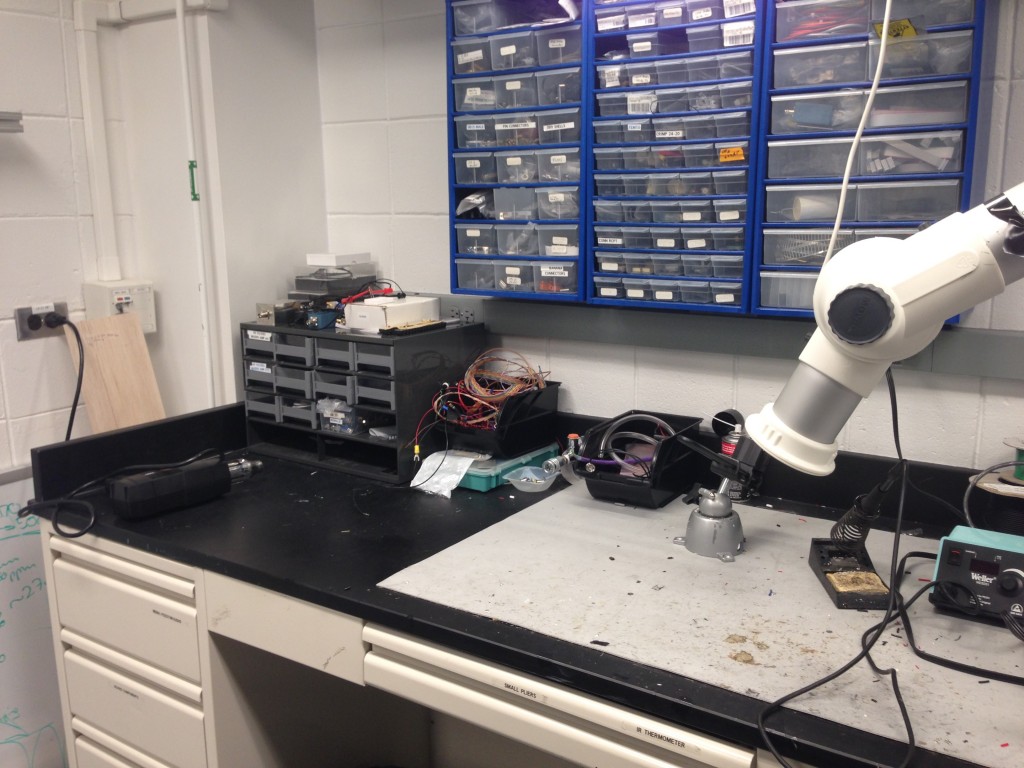
We also have an area where you can put together hardware, with drawers of electrical equipment, such as resistors, capacitors, computer charges, and many, many coils of wires.

In the other corner, we have a communal lab computer for analyzing data or searching up papers. There’s also a microscope and cabinets full of manuals and optical equipment (some cabinets not pictured). Of course, we can’t forget the colorful array of cables you see hanging there, which we often use to connect electrical components together, mostly for testing purposes.
And that’s it! The PULSe Lab is in no way representative of every lab you’d see in the E-Quad — in fact, they’re all very different. But I hope with this short tour you’ve gotten a better idea of what an engineering lab might look like. Who knows, perhaps you’ll get a chance to come to the E-Quad and see other labs sometime.
–Stacey Huang, Engineering Correspondent

